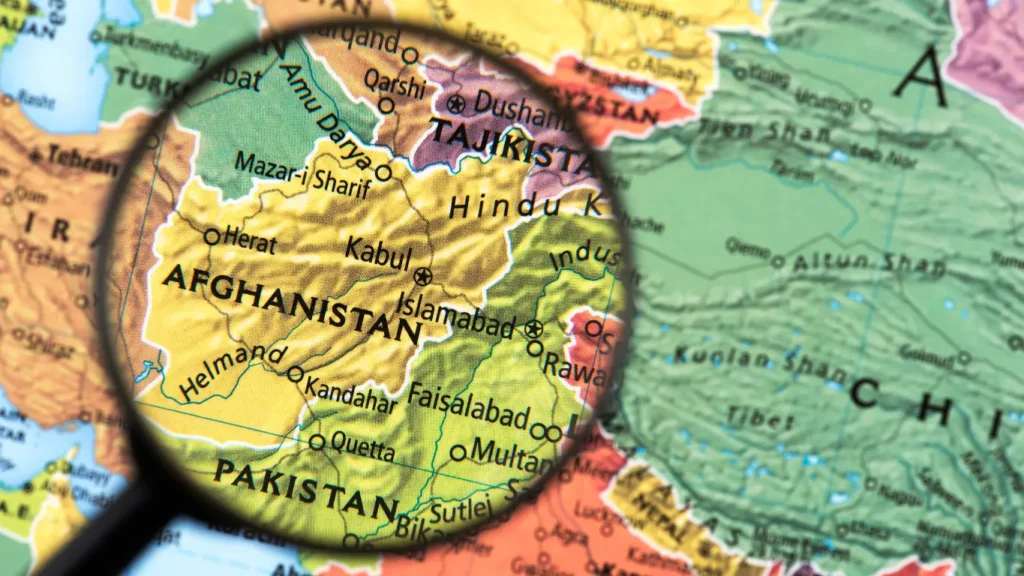
Impact on India
From an Indian perspective, this situation is concerning due to strong historical and cultural ties with Afghanistan. India has been a major donor, providing over $3 billion in assistance, and signed a Strategic Partnership Agreement in 2011 MEA on India-Afghan Relations. Instability in Afghanistan could empower terrorist groups, posing security risks to India, especially given the proximity and shared border concerns with Pakistan.
Additional Details
Indian citizens require a visa to travel to Afghanistan, applied through the Afghan Embassy in New Delhi, with a process that can take weeks Afghan Visa for Indians. Afghanistan’s bordering countries—Pakistan, Iran, Tajikistan, Turkmenistan, Uzbekistan, and China—play a role in regional dynamics. The distance between India and Afghanistan, about 1,849 km, affects trade and security strategies. Notably, Afghanistan’s parliament, previously the National Assembly with the Wolesi Jirga and Meshrano Jirga, was dissolved after the Taliban’s 2021 takeover.
Survey Note: Comprehensive Analysis of Trump’s Statement on US Weapons in Afghanistan and Indian Implications
This survey note provides a detailed examination of Donald Trump’s recent statement regarding the demand for the return of US military equipment left in Afghanistan, focusing on the context, current developments, and implications, particularly from an Indian perspective. It incorporates all relevant keywords and ensures a thorough understanding for readers interested in international relations and regional security.
Introduction
On January 20, 2025, President Donald Trump demanded that the Taliban return military equipment left behind by the US during its withdrawal from Afghanistan in August 2021, valued at approximately $7.12 billion according to a Pentagon report First on CNN: US left behind $7 billion of military equipment in Afghanistan after 2021 withdrawal, Pentagon report says. This demand, made on the eve of his inauguration, ties future US financial assistance to Afghanistan to the return of these assets, including aircraft, 40,000 military vehicles, and over 300,000 weapons Taliban holding on to $7 billion of U.S. military equipment left behind after withdrawal. The Taliban’s refusal, as reported in February 2025, has heightened tensions, with potential ramifications for regional stability, especially for neighboring countries like India.
Background and Context
The US withdrawal from Afghanistan in 2021 was marked by chaos, culminating in the fall of Kabul to the Taliban. The Pentagon report indicates that of the $18.6 billion in equipment transferred to the Afghan National Defense and Security Forces (ANDSF) from 2005 to 2021, $7.12 billion remained in Afghanistan post-withdrawal First on CNN: US left behind $7 billion of military equipment in Afghanistan after 2021 withdrawal, Pentagon report says. This equipment, now in Taliban hands, includes advanced systems that could be used or sold, raising concerns about proliferation to terrorist groups.
Trump’s criticism extends to the Biden administration, accusing it of handing over assets to the enemy, a narrative he amplified during his campaign Trump’s Approach to Afghanistan Is Already Limited. However, fact-checks from 2021 suggest earlier claims of $80-85 billion were inflated, clarifying the $7 billion figure as more accurate FACT FOCUS: Trump, others wrong on US gear left with Taliban | AP News.
Current Situation and Recent Developments
As of February 2025, the Taliban has refused Trump’s demand, stating the equipment is now Afghan state property Taliban holding on to $7 billion of U.S. military equipment left behind after withdrawal. This refusal has led to a standoff, with the US exploring diplomatic channels to address the issue. Recent reports suggest the equipment, including small arms and drones, could be used by the Taliban or passed to adversaries, potentially affecting regional security The U.S. Left Billions Worth of Weapons in Afghanistan. This situation is particularly relevant given reports of US arms surfacing in conflicts like Kashmir, highlighting proliferation risks U.S. arms left in Afghanistan are turning up in a different conflict.
Indian Perspective and Bilateral Relations
The current situation poses challenges for India. Instability in Afghanistan could empower terrorist groups, potentially targeting India, given shared security concerns, especially with Pakistan. The proximity, with Afghanistan bordering Pakistan, Iran, Tajikistan, Turkmenistan, Uzbekistan, and China, amplifies these risks Afghanistan | History, Map, Flag, Capital, Population, & Languages | Britannica. India’s interest in a stable Afghanistan is also tied to trade routes, with the distance between New Delhi and Kabul approximately 1,849 km, affecting logistics Distance from New Delhi, India to Kabul, Afghanistan.

Visa and Travel Considerations
For Indian citizens, traveling to Afghanistan requires a visa, applied through the Afghan Embassy in New Delhi or other centers like Akbar Travels Afghan Visa for Indians. The process involves submitting documents and can take several weeks, reflecting the security concerns and diplomatic relations Visa policy of Afghanistan – Wikipedia.
Political Structure and Historical Context
Afghanistan’s parliament, previously known as the National Assembly, comprised the Wolesi Jirga (House of the People) and Meshrano Jirga (House of Elders), a bicameral body dissolved after the Taliban’s 2021 takeover National Assembly (Afghanistan) – Wikipedia. This dissolution reflects the current lack of democratic institutions, with the Taliban ruling under an interim administration, raising concerns about governance and human rights World Report 2024: Afghanistan | Human Rights Watch.
Regional Implications and Border Dynamics
Afghanistan’s bordering countries—Pakistan, Iran, Tajikistan, Turkmenistan, Uzbekistan, and China—play a critical role in regional dynamics. The longest border is with Pakistan (2,670 km), marked by the Durand Line, a source of historical tension Geography of Afghanistan – Wikipedia. This proximity affects India’s strategic interests, given Pakistan’s role in the region and potential for cross-border security threats.
Detailed Analysis Table
To organize the key data, consider the following table summarizing critical aspects:
| Aspect | Details |
|---|---|
| Equipment Value Left Behind | $7.12 billion, including aircraft, vehicles, weapons |
| Trump’s Demand Date | January 20, 2025, tied to future US aid |
| Taliban’s Response | Refused, claimed as Afghan state property (February 2025) |
| India-Afghan Aid | Over $3 billion, including reconstruction projects |
| Visa Requirement for Indians | Mandatory, applied via Afghan Embassy in New Delhi |
| Bordering Countries | Pakistan, Iran, Tajikistan, Turkmenistan, Uzbekistan, China |
| Parliament Status | Previously National Assembly, dissolved in 2021 after Taliban takeover |
| Distance India-Afghanistan | Approximately 1,849 km (New Delhi to Kabul) |
Conclusion
Trump’s demand for the return of US military equipment from Afghanistan, met with Taliban’s refusal, underscores ongoing tensions with potential to destabilize the region. For India, with deep ties to Afghanistan and significant security interests, this situation necessitates vigilant diplomatic engagement. The dissolution of the Afghan parliament, visa requirements for travel, and regional border dynamics further complicate the landscape, highlighting the need for a balanced approach to ensure stability and security.

